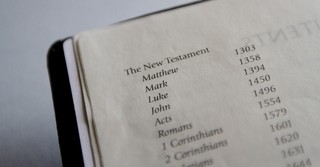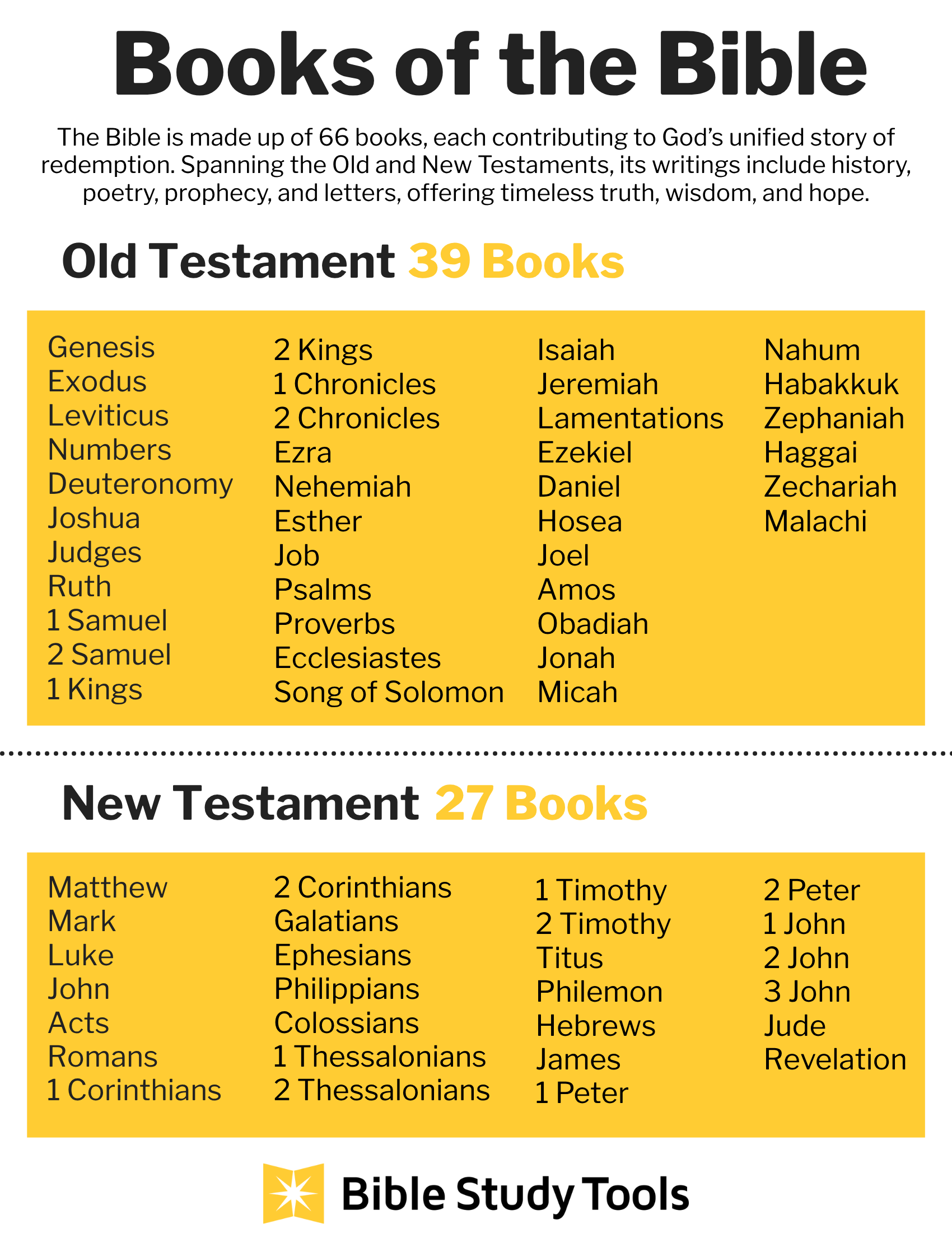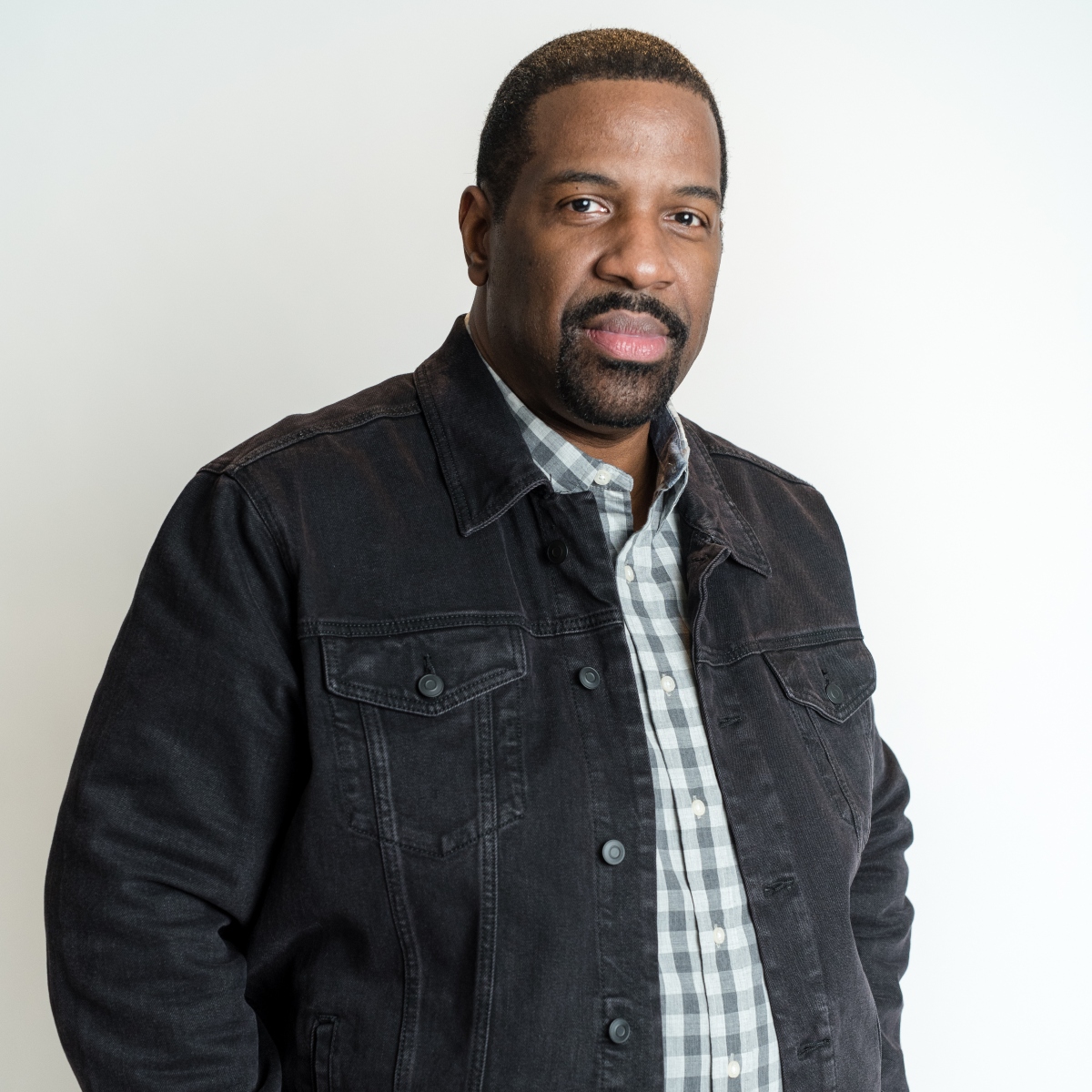How Many Books Are in the Bible and How Did They Get There?
Share

I remember growing up in Sunday School and we had to learn the books of the Bible. Surprisingly all these years later I can still recite all sixty-six of these books in order. As important as it is to know how many books are in the Bible, why just those books were chosen is equally important.
I don’t know if you have ever asked the question how did we get to those books? This process of selection was not a decision that was devised in the minds of men. What is true is that this process was really birthed in the mind of God. Having a little better understanding of this will help you understand why we have these books in the Bible and why just those 66 were the ones selected.

How Many Books Are in the Bible?
The Bible is often thought of as one book. However, it is actually a compilation of 66 different books written by 40 different authors. These authors were not all connected to each other, most did not even know each other because these books were written over a period of approximately 1500 years.
In relation to the Bible, you will often hear the term canon which comes from the Greek word kanon, meaning "rule" or "measuring stick." Canon refers to the collection of books that are recognized as divinely inspired and authoritative for faith and practice. Essentially, the biblical canon is the "official list" of books that belong in Scripture.
The Old Testament, comprising 39 books, was primarily written in Hebrew (with some portions in Aramaic) and forms the foundation of the Jewish Scriptures. It is deeply connected to the Torah, the first five books—Genesis, Exodus, Leviticus, Numbers, and Deuteronomy—often referred to as the Law or the Pentateuch. These books outline God’s covenant with Israel, His laws, and His instructions for holy living. The Old Testament also includes historical books, poetry and wisdom literature, and prophetic writings that foretell the coming of the Messiah. Its canon was largely recognized within the Jewish community by the time of Jesus, preserved with meticulous care by scribes.
The New Testament, containing 27 books, was written in Greek after the life, death, and resurrection of Jesus Christ. It focuses on His ministry, the establishment of the early church, and the promise of His return. The Gospels—Matthew, Mark, Luke, and John—detail the life and teachings of Jesus, fulfilling the prophecies of the Old Testament. The book of Acts records the growth of the early church, while the epistles offer guidance and encouragement to believers. Finally, Revelation provides a prophetic glimpse into the end times and Christ’s ultimate victory. The New Testament canon was recognized by the early church, formalized by the 4th century, and rooted in the authority of apostles and their close associates.
What makes the Bible so unique and special is that even with this large time gap between the first book written and the last book written, there is a consistency of thought and messaging. There is no other book that can match that. Though there continues to be skeptics today, this type of accuracy and consistency could only be accomplished by the hand of God.
Some versions of the Bible, such as the Catholic Bible and Eastern Orthodox Bible, include additional books that are not found in the Protestant Bible. These extra books are known as the Deuterocanonical books, coming from the Greek words deutero (second) and kanon (rule or standard). It refers to the fact that these books were recognized as part of the biblical canon at a later time compared to the books of the Proto-canon (the "first canon" or universally accepted books).They are considered Scripture by Catholics and Orthodox Christians but are viewed as apocryphal (non-canonical) by most Protestant traditions.
Examples of these books include:
- Tobit
- Judith
- 1 and 2 Maccabees
- Wisdom of Solomon
- Sirach (Ecclesiasticus)
- Baruch
- Additions to Daniel (e.g., "The Prayer of Azariah" and "Bel and the Dragon") and Esther.
The Deuterocanonical books were included in the Greek translation of the Hebrew Scriptures known as the Septuagint (LXX), which was widely used by Jews in the centuries before Jesus and by the early Christian Church. The Catholic Church formally recognized the Deuterocanonical books as part of Scripture at the Council of Trent (1545–1563) in response to the Protestant Reformation, which excluded these books from the canon. Protestants refer to these books as Apocrypha, meaning "hidden" or non-canonical.
During the Reformation, Martin Luther and other Reformers excluded the Deuterocanonical books from the Protestant canon. They argued that these books were not part of the Hebrew Bible (used by Jewish communities) and lacked clear evidence of divine inspiration.The question is how were the 66 books in the Bible chosen and why just those? Let’s answer this by looking at each testament separately.
Photo credit: ©SparrowStock
Old Testament Books

The Old Testament scriptures were paramount to the Jewish religion, or Judaism. These scriptures were divided into three main sections: The Law, The Prophets, and The Writings. They were grouped a little bit differently than the way you would recognize the Old Testament today, but they still contain the same books. For example, the books of Joshua and Judges were included as among the writings of the Prophets, where today they are referred to more as historical books. Again, this doesn’t change the messaging or authority of these books, it is just simply their groupings.
Jews recognized the authority of the Hebrew scriptures almost from the moment they were written. Consider for instance that Moses wrote the first 5 books, which is known as the Law. This was the basis for all Hebrew life and culture and was implemented as soon as Moses wrote them. You will also notice that Jesus and other New Testament writers referred to the Old Testament, even quoting from it. This gave further credibility to their authenticity and authority as the scriptures or the word of God.
Here is a list of the 39 books of the Old Testament as traditionally recognized in Protestant Bibles:
- Genesis
- Exodus
- Leviticus
- Numbers
- Deuteronomy
- Joshua
- Judges
- Ruth
- 1 Samuel
- 2 Samuel
- 1 Kings
- 2 Kings
- 1 Chronicles
- 2 Chronicles
- Ezra
- Nehemiah
- Esther
- Jeremiah
- Lamentations
- Ezekiel
- Daniel
- Hosea
- Joel
- Amos
- Obadiah
- Jonah
- Micah
- Nahum
- Habakkuk
- Zephaniah
- Haggai
- Zechariah
- Malachi
Photo credit: Unsplash/jdsimcoe
New Testament Books

The New Testament went through a slightly different process of being considered as part of the canon of scripture. One of the major differences was while the Old Testament was written primarily to one group of people, the Jews or Hebrews, the New Testament was written to and for different groups of people. Among those were both Jewish and Gentile audiences. There were some specific questions that were asked about the New Testament books that were necessary for them to be included in Scripture. Here are some of those questions or considerations:
- Was it written by an apostle or someone close to an apostle?
- Was it in alignment with what was already known about God or being taught?
- Was it accepted universally by the churches at that time?
Another way of looking at it is the authority of Scripture was determined by how the new writings lined up with the scriptures that already had this authority. Did what was new line up with what was old? The goal was not to create authority in the writings but simply to recognize the authority that was already there. Ultimately the writings were inspired by God and this inspiration was seen and acknowledged in the writings themselves. As we are reminded:
“All Scripture is God-breathed and is useful for teaching, rebuking, correcting and training in righteousness” (2 Timothy 3:16).
The goal of canonization of the scriptures was to look for and see the mark of the “breath of God” within the writings. That’s why consistency and conformity to what has already been taught and revealed mattered, because ultimately God is the author and his message won’t change from one period of time to the next.
Here is a list of the 27 books of the New Testament:
- Matthew
- Mark
- Luke
- John
- Acts
- Romans
- 1 Corinthians
- 2 Corinthians
- Galatians
- Ephesians
- Philippians
- Colossians
- 1 Thessalonians
- 2 Thessalonians
- 1 Timothy
- 2 Timothy
- Titus
- Philemon
- Hebrews
- James
- 1 Peter
- 2 Peter
- 1 John
- 2 John
- 3 John
- Jude
- Revelation
Photo credit: ©Getty Images/pamela_d_mcadams
When Was the Bible Compiled into One Book?

When considering when the Bible was compiled into one book you are focusing on the New Testament, because the Old Testament was already accepted as Scripture. While the writings existed, it really wasn’t until the 5th century that there was a measure of consensus on the canon of scriptures.
What we know and treasure as the Bible today was not how the Bible was distributed very early on. Because there were no printing presses the Bible had to be copied by hand, which was a massive undertaking, and these copies were distributed.
The other challenge you had when Bibles were first copied and distributed is that many people were illiterate and therefore unable to read. One of the earliest Bibles that was printed and not copied by hand was the Gutenberg Bible which was printed in the 1450’s. There were also translations of the Bible from the original Greek and Hebrew into English. Among those were the Great Bible in 1539, the Geneva Bible in 1559 and the more well-known King James Version in 1611.
Why Aren't Other Books Included?
Even though we have the canon of Scripture today, there were other writings that were not included. Among those were the writings found in The Apocrypha, which are 14 books written somewhere between 450 BC and the writings of the New Testament. These books can be found as part of the Catholic Bible but are not found in what we would deem a Protestant Bible, which is the Bible you are probably most familiar with. In fact, if you have never seen a Catholic Bible you might not even know these books existed.
After consideration in early church history, it was deemed that these books would not be included in the canon. Though they included useful historical information and were not necessarily “bad” writings, they were not considered to have the authority of Scripture. Among the reasons is that neither Jesus, nor the early apostles ever referred to these writings and there were teachings within these writings that did not line up with other portions of Scripture. As we mentioned earlier, this was an important test because of the unity of the teachings of Scripture.
Photo credit: ©Getty Images/PhoebeMillerDesign
How and Why Can We Trust the Books of the Christian Bible?

If you search around the internet, you may find people who will try to cast doubt about the authenticity of the Bible. You however can be confident in how many books are in the Bible and why just those books are included. Ultimately the decision to include or not include books was not a random decision, made by the whim of man, but was truly led and inspired by the hand of God. It is his desire to protect and provide the truth of who he is to all of mankind. For this reason, he has preserved the authenticity of the scriptures. His word, his promises, his decrees, can all be trusted. Consider these scriptures:
“Do not think that I have come to abolish the Law or the Prophets; I have not come to abolish them but to fulfill them. For truly I tell you, until heaven and earth disappear, not the smallest letter, not the least stroke of a pen, will by any means disappear from the Law until everything is accomplished” (Matthew 5:17-18).
“For you have been born again, not of perishable seed, but of imperishable, through the living and enduring word of God. For, ‘All people are like grass, and all their glory is like the flowers of the field; the grass withers and the flowers fall, but the word of the Lord endures forever.’ And this is the word that was preached to you” (1 Peter 1:23-25).
“As the rain and the snow come down from heaven, and do not return to it without watering the earth and making it bud and flourish, so that it yields seed for the sower and bread for the eater, so is my word that goes out from my mouth: It will not return to me empty, but will accomplish what I desire and achieve the purpose for which I sent it” (Isaiah 55:10-11).
“As for God, his way is perfect: The Lord’s word is flawless; he shields all who take refuge in him” (Psalm 18:30).
“The law of the Lord is perfect, refreshing the soul. The statutes of the Lord are trustworthy, making wise the simple. The precepts of the Lord are right, giving joy to the heart. The commands of the Lord are radiant, giving light to the eyes” (Psalm 19:7-8).
Always More to Learn
This subject of the canon of Scripture, how many books are in the Bible, why just those, and how they got there is one that has more information than could ever fit into one article. If you want to know more there is plenty more to learn and you can really take a deep dive into this topic.
Whether you decide to research further or not, you can feel confident in the Bible you have today. It is the right message and the right truth you need to know who God is, how much he loves you, and his wonderful plan of salvation through Jesus Christ our Lord.
Photo credit: ©Getty Images/Aldo Murillo

He is the author of The Pursuit of Purpose, which helps readers understand how God leads them into his will, and the author of The Pursuit of Victory: How To Conquer Your Greatest Challenges and Win In Your Christian Life. Clarence is also committed to helping 10,000 people learn how to study the Bible and has released his first course, Bible Study Basics, to achieve that goal. To learn more about his ministry and resources, please visit clarencehaynes.com.